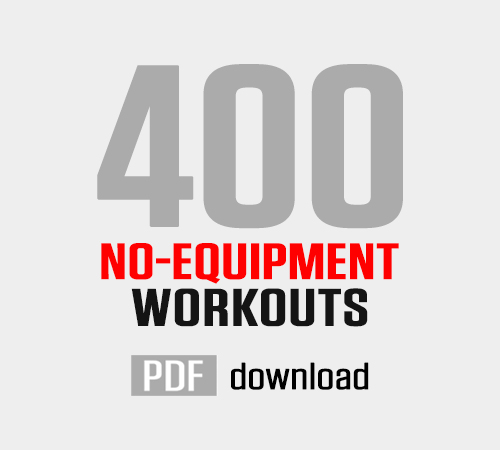The explosive speed of Usain Bolt and the jumping ability of Michael Jordan are the stuff of legend. One is the fastest man in the world and the other has the highest vertical jump in NBA history, measured at 46 inches.
Both men work at their skill, which means that if we can understand the mechanism that powers their exceptional ability we can begin to work at improving our own skill in running fast and jumping high. Because everything we do in terms of explosiveness is powered by our legs, having quads that are strong enough to make us faster and capable of jumping higher will also improve our performance in a host of other areas including punching power, overall body strength and overall explosiveness.
Obviously to run faster or jump higher requires strength. It also requires the ability to use that strength in the shortest possible time (explosiveness). Muscle size that’s determined by genetics is only part of the picture. Taller people with bigger muscles do have a natural advantage here but that’s not the full story. Consider that Tyrone “Muggsy” Bogues the shortest player in the history of NBA is 5ft 3. He has a jump which at just over 44 inches is less than two inches shorter than Michael Jordan’s who is over a foot taller than him. Bogues is able to jump higher, faster than dozens of top NBA players who also are over a foot taller than him.
So, large muscles help but they are not what define performance. So what does? This is where the studies get really interesting.
Full Range of Motion Exercises and Muscle Strength
Strength gains are joint-angle specific. This means that the angle at which you train your muscles will train those muscles to perform at that particular angle. Doing a half squat will only train your quads to be stronger at the half-squat range of motion and doing a full squat will train them to be stronger at the full-squat range of motion (typically 0-120° of knee flexion). A quarter squat will, as you may have guessed, only train your quads to perform at the typical 0-60° of knee flexion.
When it comes to increasing the size of our quad muscles full range motion is the only way to go. Anything else simply does not challenge the muscles sufficiently to activate hypertrophy in the muscles which make them grow larger.
The question we really need to ask however is whether muscle strength or muscle size transfer into greater speed in running or greater height in vertical jumping. There are not many studies that have been carried out here, but some news ones shed light on this question with some surprising results.
When comparing the results in sprinting and jumping of three groups of athletes who trained using quarter, half and full squats, respectively the researchers found that:
- Strength is joint-angle specific and squats are very sensitive to this
- Muscle growth happens only at the full-squat range of motion
- Most gains in sprinting speed and jumping height were made by those who trained in quarter squats
The last of the findings is surprising. If muscles get stronger with larger range of motion exercises and can only grow bigger with a full squat it became puzzling to see athletes become faster and able to jump higher when they used quarter squat training techniques.
Incidentally squat hold punches (a favorite Darebee training technique) has also, traditionally, been used by various martial arts styles as a way to increase leg strength in kicking and jumping.
How Running Speed and Jumping Height are Generated from Muscles
The reason quarter squats are so good at helping athletes generate greater speed in their sprinting and greater height in their vertical jumping lies in three distinct components of sprinting and jumping:
- Hip extensors
- Angle of peak torque (the joint angle at which a muscle can produce its maximum force)
- Force vector (the direction at which muscles can exert their greatest force)
Both sprinting and jumping require the muscles to generate great force at a particular joint-angle. The joint-angle corresponds to the muscle length that’s activated. Because both sprinting and jumping happen at joint-angles that more closely correspond to the quarter squat, training in quarter squats increases the strength in the muscle length that is activated when sprinting or jumping occurs.
There are also strong indications from the research that show that quarter squats most closely correspond to muscle strength gains that can be transferred in the directional force (the force vector) demanded by both sprinting and jumping. Because they activate hip flexors well in this range of motion, that also contributes to gains in running speed and jumping height.
Conclusion
If you are training your quads to generate a lot of strength (to help lift weights) and also want to see an increase in muscle size then full length squats are the way to go.
For the best increase in running speed and jumping height however quarter squats appear to deliver superior results, particularly if you are already at a good level of fitness and are focusing on improving your performance.










